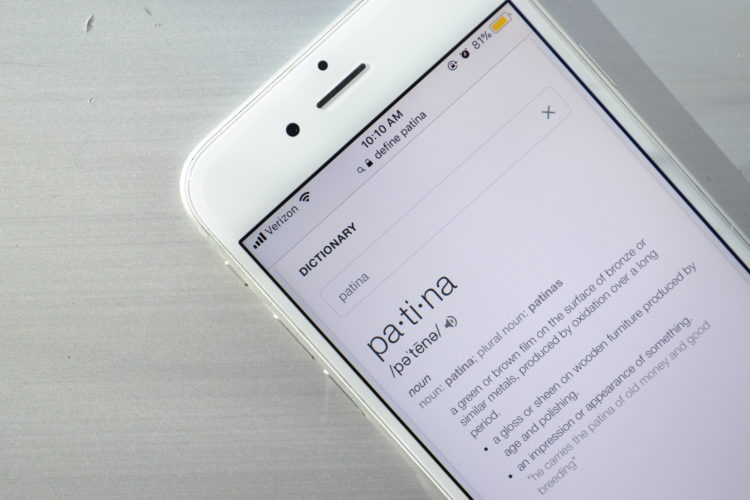For many homeowners, a trip to a surface showroom can be a bit like a journey to Italy: Sometimes, you’re surrounded by people who just aren’t speaking your language.
But stone surface industry jargon doesn’t require Rosetta Stone to learn the ropes — getting the gist of a few key terms can make your trip a little easier.
Compressive Strength:
The measure of a material’s resistance under compression (being pushed together). A higher compressive strength is ideal because it means your surface will be more durable.
Engineered Slab:
The process of taking natural stone materials and putting them through a manufacturing process that improves upon their qualities as a surface. For example, engineered surfaces are more resilient, durable, and consistent than natural surfaces.
Related: Learn more about the difference between engineered and natural stone.
Etching:
Whether you do it accidentally or on purpose, etching is the process of roughing up a surface. Think of it like rubbing sandpaper over a smooth surface. Acid etching is a popular method that causes a surface to become pitted by using acid to dissolve some of the calcium carbonate.
Gloss Meter:
An instrument used to measure the reflectivity of light off of a surface — the higher the reading, the higher the shine. Most quartz manufacturers average in the low 50s on the gloss meter, but you’re better off if you can find those with a higher polish level that averages around 60 to 65.
Honed Finish:
When the surface of the material has a perfectly smooth, flat, matte finish — no etching.
Mohs Hardness:
The Mohs scale rates the hardness of materials, with talc being a 1 and diamond being a 10. Quartz ranks 7 on the Mohs scale, making engineered quartz slabs highly durable material for surfacing applications.
Patina:
A change to the surface based on age and exposure. After time, any stone material will gain a patina, and, for many, this unique wear is one of the appeals of a quartz or marble surface.
Porous:
Under a microscope, you’ll see that stone has many tiny air pockets. The more it has, the more porous the surface; and a porous surface will retain dirt and stains more easily than a nonporous surface. Engineered surfaces are less porous than natural surfaces (Santamargherita quartz surfaces are nonporous, making them highly resistant to liquids and acids).
Resin:
The binding used in the manufacturing process. These bonding agents are basically the glue that binds all the aggregate stone together. When manufacturers make an engineered quartz or engineered marble material, resins are added to the aggregate material and catalyzed to form a durable slab.
Tensile Strength:
The measure of a material’s resistance under tension (being pulled apart). Similar to the compressive strength, a higher tensile strength contributes to a surface’s durability.
Vibro-Compression:
Also known as the Bretonstone system, this is the patented method by which manufacturers increase a slab’s density during the engineering process by compressing the resin and aggregate under vacuum before catalyzing the resin.
By brushing up on these stone surface industry terms before you head to the showroom, you’re fit to find the surface fit to make your space a true capolavoro.
Ready to talk the talk? Find a dealer near you and show what you know.
—
John Brodrick is the North American sales manager for Santamargherita. He has 17 years of experience in the manufacturing industry specializing in engineered surfaces for residential and commercial use. John has lent his expertise to projects worldwide ranging from airports and shopping malls to thousands of residential homes.


